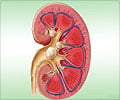NHS could potentially reduce its expenses by £720,000 each year if it modifies its clinical methods for treating finger injuries in children.

‘New study reveals that reevaluating clinical practices for treating finger injuries in children could result in the NHS saving as much as £720,000 per year.’





In many cases surgery is performed to repair the underlying nail bed tear. Over 10,000 operations are performed in the UK alone each year. Two treatment options are available during surgery. Children either have their fingernail placed back on the injured nail bed after the operation, or it is discarded entirely.
The current practice sees about 96% of surgeons replacing the nail, but the new study questioned whether this approach had an impact on infection rates and whether it was cost-effective compared with throwing the nail away.
Revolutionizing Clinical Methods
Abhilash Jain, Associate Professor of Plastic and Hand Surgery at the Nuffield Department of Orthopaedics, Rheumatology and Musculoskeletal Sciences (NDORMS), Oxford explained: ‘The rationale behind reattaching the nail is that it protects the repair, reduces infection and is less painful when the dressings need to be changed.However, there was no evidence to support this practice, and while many papers have been published explaining how to put the nail back, there wasn’t any telling you why you should put it back.’
Advertisement
The primary outcome measured was infection at 7 days. A cost-effectiveness analysis has been accepted for publication in the British Journal of Surgery.
Oxford Study Helps Cut NHS Expenses
The key findings:- Discarding the nail would save the NHS £75 per patient.
- There was no statistically significant difference in infections or the appearance of the nail between the treatment groups.
- At 4 months 3.5% of children in the nail replaced group had infections, compared with 0.9% for the nail discard group.
- Dr. Helen Dakin, University Research Lecturer at Oxford Population Health’s Health Economics Research Centre said: ‘By discarding the nail and making operations across the UK shorter and simpler, the NHS could save £720,000 each year.’
‘The response to the trial when we started was amazing. We were able to engage surgeons and hospital units who had never been involved in trials before, particularly with children. There was great coordination, and we were able to deliver cheaply and ahead of schedule. We’ve since seen a massive increase in plastic and hand surgery clinical trials that have helped change the landscape for patient care.’
The study was run by SITU (the Surgical Intervention Trials Unit) in Oxford, one of the Royal College of Surgeons specialist surgical trials units, and in collaboration with OCTRU (Oxford Clinical Trials Research Unit). It was funded by the National Institute for Health and Care Research (NIHR) and supported by the NIHR Oxford Biomedical Research Centre.
Source-Eurekalert











